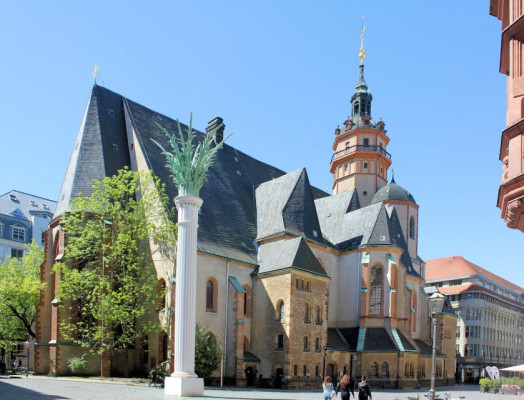Construction started in Romanesque style in 1165, but in the 16th century, the church was turned into a Gothic hall church. Baroque elements like the tower were added in the 18th century.
In the 18th century, several works by Johann Sebastian Bach, who was as Thomaskantor the music director of Thomaskirche and Nikolaikirche from 1723 to 1750, premiered here. The Neoclassical interior dates to the late 18th century.
The church rose to national fame in 1989 with the Monday Demonstrations when it became the centre of peaceful revolt against communist rule. By capacity, it is one of the largest churches in Saxony.
History
Construction of the church began about 1165. It is named after St. Nicholas, patron of travelers and merchants. It was built originally in the Romanesque style but was extended and enlarged in the early 16th century in the Gothic style. The Baroque main tower was added in 1730; the portal dates from 1759.
Notable philosopher and mathematician Gottfried Wilhelm Leibniz was baptized here as an infant on 3 July 1646.
From 1784 to 1797 the interior was remodeled by German architect Johann Carl Friedrich Dauthe in the Neoclassical style. The church has been a Protestant seat since 1539 after the Protestant Reformation, but today the Catholic Church is also allowed to use it.
The church saw four of the five performances (including the premiere) of the St John Passion by Johann Sebastian Bach on Good Friday in 1724, 1728, 1732, and 1749, as well as many of his cantatas and oratorios performed by the Thomanerchor.


